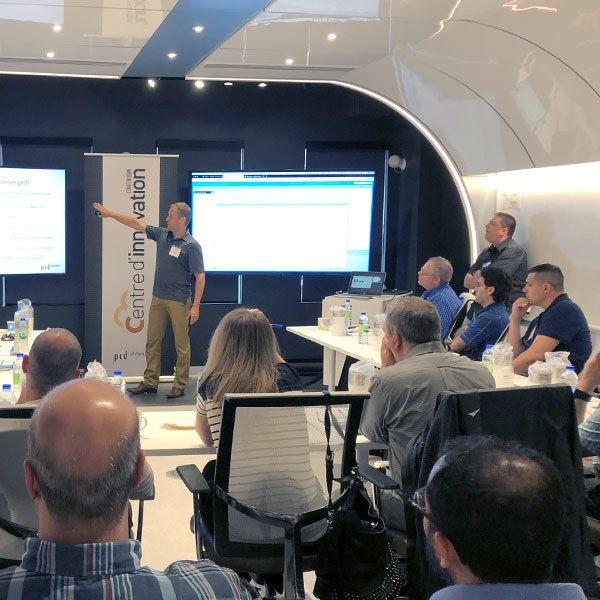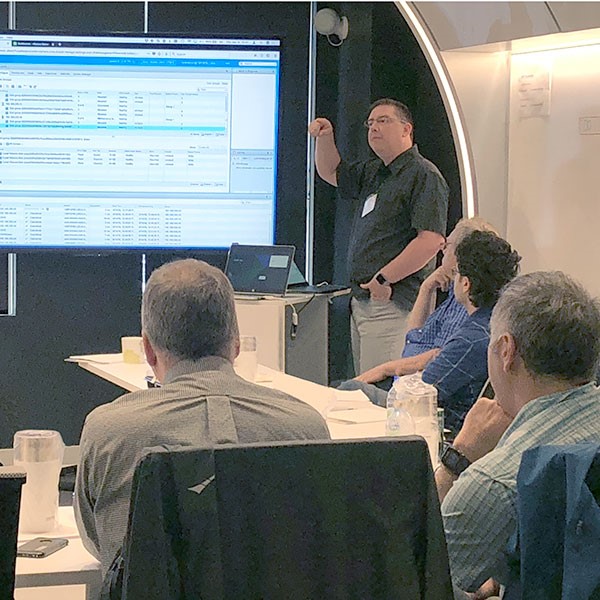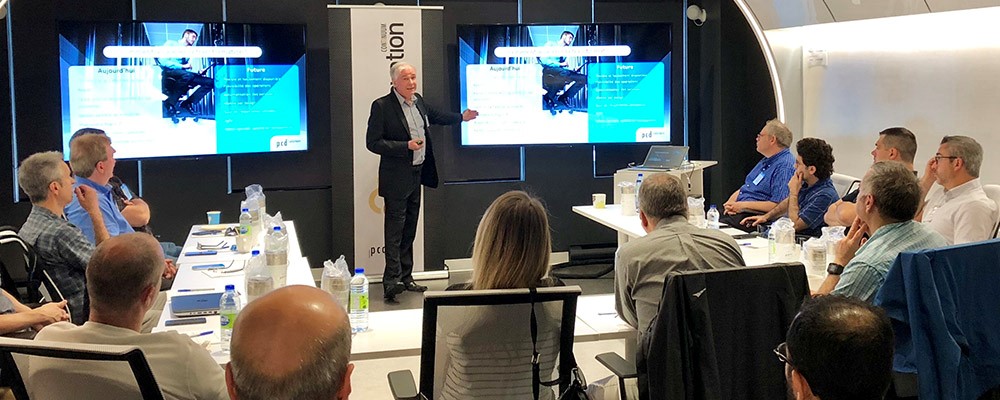Important choices in terms of technology and achitecture
In a constantly changing technological, legal, and commercial context, it is essential for companies to have at their disposal agile infrastructures that are sufficiently flexible to follow, and sometimes even anticipate, changing needs, especially among their internal users.
This makes choosing solutions, technologies, and architectural options a sensitive issue that is particularly important for IT departments that want to modernize their installations. The move to the new hybrid cloud reality also forces IT departments to call into question some practices in order to give more thought to new avenues being introduced by specialized cloud service providers that offer specific applications and micro services.
4 key questions at the heart of the PRO and CON debate regarding the shift to the SDS (Software-Defined Storage) approach proposed by VMware with vSAN.
Participants were asked to think about and directly question the effectiveness and the limits of the traditional SAN approach. The session also touched on changes in the role and responsibilities of the IT group.
1 – Does your company’s current service management approach have the agility and flexibility required to provide its internal customers with good service?
2 – Would the efficiency of your IT operations benefit from the standardization, automation, and simplification offered by the VMware approach?
3 – Would your company benefit from devoting a greater proportion of its IT resources to the direct exploitation of the value of its data than to the operation of storage, backup, and recovery infrastructures?
4 – Which services and/or applications are your users already operating in the cloud? When will you need to implement an integrated systematic approach to data governance, data management, and security controls for services placed in the cloud?
Relatively simple questions, but each time they are raised, they make participants’ think about the new reality of the cloud, the current state of their business practices, the adoption of the SDS approach in the market, and concrete examples of benefits that can be obtained by using vSAN.
Sylvain Mony, vice president of consulting services at PCD brought up this point:
“I can only imagine how much information you are bombarded with by manufacturers. Once again, what is particularly interesting about VMware’s software-defined approach is this independence from the hardware layer and the many innovations that VMware continually bring to its solutions to increase your organization’s agility and the value of its solution.”
VMware’s well-thought-out, cloud-ready approach and the transformation of data centre environments can go a long way in helping Quebec businesses begin their shift towards digital transformation.
Considering this future coexistence of internal IT services and those placed in the public cloud, industry analysts are very positive about the establishment of standards and the agreement recently signed between VMware and Amazon (AWS) which will be using its SDDC platform.
VMware vSAN – A radically different approach
After more than seven years of investment and development since the initial launch of the VSAN solution, VMware is offering a storage management approach based on the principles of virtualization and software-defined management. A radically different approach in the sense that it favours the use of standard industry server components (e.g., clusters of Intel x86 systems or the new generations of hyperconverged systems) to allow for an approach that is flexible, modular, and particularly economical to operate.
With policy-based management (at the software level), intelligence and service features are now programmed, encapsulated, and directly integrated with VMs and hypervisor. This simplified management of storage through the vCenter console and this new ability to move services, allow unparalleled mobility to operate the various internal services in a multisite context or even—when extending the management, governance, and security control approach—to external cloud providers. With the recent adherence of Amazon and IBM Cloud to the VMware SDDC platform, vSAN is becoming a true operating standard among leading cloud stakeholders.
The main use cases observed so far:
- Modernization of enterprise storage systems (SANs)
- Hyperconverged infrastructure projects
- Storage for critical applications (high performance/availability)
- Remote site management (ROBO)
- Business continuity and disaster recovery
- Desktop virtualization
- Total cost of ownership reduction strategy
This list is non-exhaustive, but represents a concrete view of the needs and projects that can currently be encountered by IT departments.
What the experts are saying
To summarize the discussions at the meeting, our experts here list the main reasons that led them to believe that all IT teams should start thinking about how enterprise storage practices and standards are changing.
 |
As a solutions architect, I have observed:
|
According to Pierre Grothé, Senior Systems Engineer at VMware, the main reasons for the SDS trend are:
|
 |
 |
Finally, accordying to Marc De Grasse specialized consultant in the implementation of SDDC solutions at PCD, various elements must be taken into consideration to successfully implement the vSAN solution:
|
Feedback from their first projects
The observations made by the PCD team in the field are a rich source of information. According to Nathalie Deschênes, Sales Group Manager: “Since the beginning of 2018, more and more companies are considering the deployment of vSAN technology within their infrastructures. Our experts and their efforts in the field have led to several vSAN projects, ranging from simple proof-of-concept to deploying and implementing client solutions. In every case, the result has been improved infrastructure agility and performance.”
This observation was not proved wrong during the TechnoLab session, since we were able to observe a real interest among the participants, in particular by their very specific responses and comments, as much on implementing the solutions as on the possibilities of developing the solution for their environments.
Most of the audience questions focused on:
- The possibility of integrating a traditional SAN environment with the vSAN solution architecture
- New approaches to governance in the hybrid cloud context
- Assessment of storage needs to optimize performance
- The storage sharing approach between different groups of VMs (for service level management)
- Backup of vSAN environments and the availability levels of the solution
- The ability to replicate data over long distances
- The justification approach and the calculation of the solution’s return on investment
If you would like to attend our next TechnoLab
If you would have liked to attend but were unable to do so, it is possible to organize a personalized presentation for your company. Otherwise, the next TechnoLab presentation on vSAN is scheduled for Thursday, November 29, 2018. If you would like to pre-register, contact us at continuum@pcdsolutions.com



